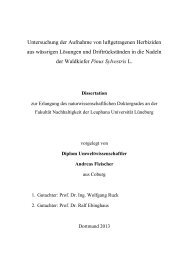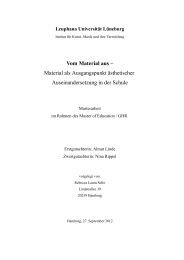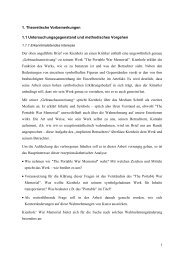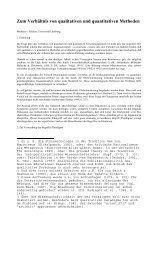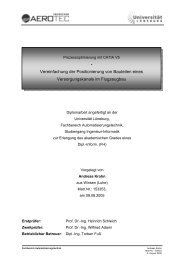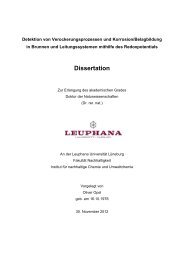Determinants of Emotional Experiences in Traffic Situations ... - OPUS
Determinants of Emotional Experiences in Traffic Situations ... - OPUS
Determinants of Emotional Experiences in Traffic Situations ... - OPUS
Create successful ePaper yourself
Turn your PDF publications into a flip-book with our unique Google optimized e-Paper software.
The <strong>Emotional</strong> Spectrum <strong>in</strong> <strong>Traffic</strong> <strong>Situations</strong> 43<br />
5%<br />
4%<br />
3%<br />
2%<br />
1%<br />
0%<br />
LD% HD% LD% HD% LD% HD% LD% HD% LD% HD% LD% HD% LD% HD% LD% HD%<br />
C% O% C% O% C% O% C% O%<br />
Arrival% Safety% Arrival% Safety%<br />
Goals blocked%<br />
Goals promoted%<br />
C = Circumstance-blame; O = Other-blame; LD = Low (task) demand; HD = High (task) demand; y-axis: Intensity <strong>of</strong><br />
anxiety<br />
Figure 3: Situational properties and anxiety <strong>in</strong>tensities <strong>in</strong> study 1<br />
2.2.3.2.3 Test<strong>in</strong>g H3<br />
In goal promot<strong>in</strong>g situations positive emotions are more <strong>in</strong>tensive than <strong>in</strong> goal block<strong>in</strong>g situations.<br />
This hypothesis was tested with three positive emotions: relief (Figure 4), hope (Figure 5) and<br />
satisfaction (Figure 6). Relief occurred when traffic situations resolved <strong>in</strong> a goal congruent manner<br />
!<br />
(M = 1.43, SD = 1.42 vs. M = 0.67, SD = 0.83; F (1, 99) = 93.38; p < .001; η ! = .51). A three-way<br />
<strong>in</strong>teraction F (1, 99) = 36.94; p < .001; = .30) between goal congruency, relevance and blame was<br />
caused by the fact that even a goal <strong>in</strong>congruent situation could trigger relief on par with congruent<br />
ones (M = 1.16, SD = 1.44 vs. M = 0.97, SD = 1.12). But this requires a safety context and is slightly<br />
stronger when circumstances are to blame (malfunction<strong>in</strong>g traffic lights at a junction).<br />
Hope occurred <strong>in</strong> arrival-related situations regardless <strong>of</strong> blame or goal congruency<br />
!<br />
(F (1, 99) = 54.74; p < .001; η ! = .36). The overall mean <strong>of</strong> M = 0.50 (SD = 0.96) was significantly<br />
higher compared to the grand mean <strong>of</strong> M = 0.14 (SD = 0.49) <strong>in</strong> safety related situations. Another ma<strong>in</strong><br />
effect could be observed on the blame level: circumstance-blame elicited slightly stronger feel<strong>in</strong>gs <strong>of</strong><br />
hope (M = 0.45, SD = 0.91) than other-blame situations (M = 0.19, SD = 0.54); F (1, 99) = 38.85;<br />
!<br />
p < .001; η ! = .30).<br />
The third positive emotion <strong>in</strong> the experiment, satisfaction, was most strongly l<strong>in</strong>ked to goal<br />
promot<strong>in</strong>g situations (F (1, 99) = 130.14; p < .001; η ! ! = .57). A deeper analysis revealed a three-way<br />
<strong>in</strong>teraction between goal congruence, blame and goal relevance. This effect (F (1, 99) = 70.03;<br />
p < .001; η ! ! = .41) occurred on levels <strong>of</strong> promoted goals due to higher means <strong>of</strong> satisfaction <strong>in</strong> otherblame<br />
/ arrival situations (a car <strong>in</strong> front <strong>of</strong> the participant at a junction) (M = 1.75, SD = 1.35)<br />
compared to safety contexts <strong>in</strong> general (M = 0.21, SD = 0.68).<br />
!



